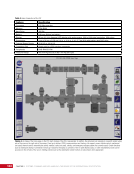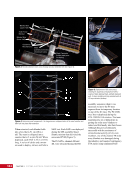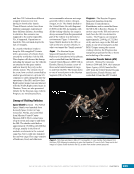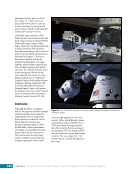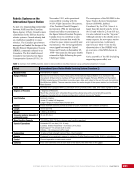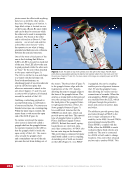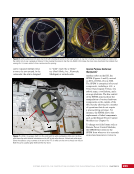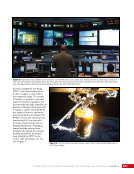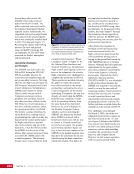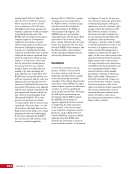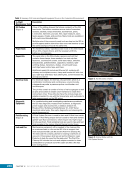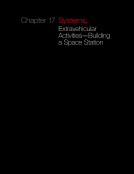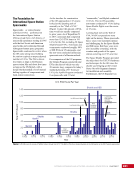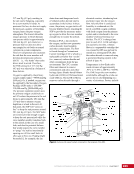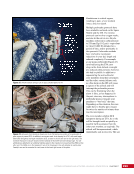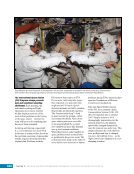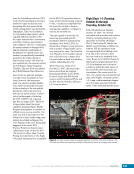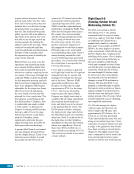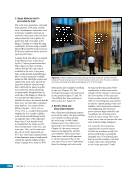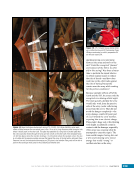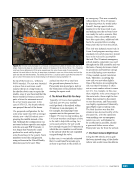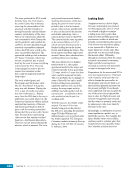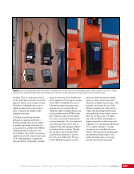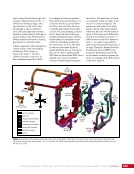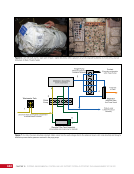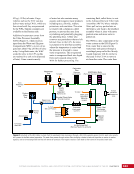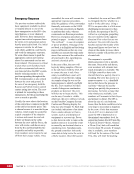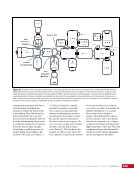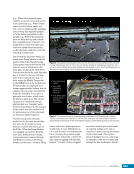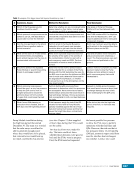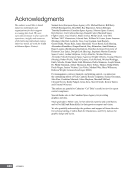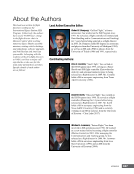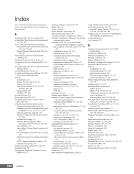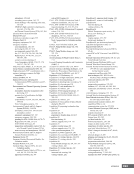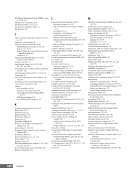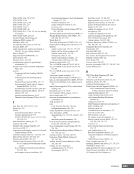291 SYSTEMS: EXTRAVEHICULAR ACTIVITIES—BUILDING A SPACE STATION CHAPTER 17 Tether Stowage Area Fan/Pump/Separator unit, removed from suit EMU with backpack facing Steve, who unzipped the white thermal cover and tilted the suit down to access the suit components. Figure 11. Astronaut Steve Swanson holds a Fan/Pump/Separator unit (with protective cylinder installed on the end). Several of these units were changed out in the on-board suits due to failures, as well as to investigate the cause of an incident on US EVA 23 where water entered a crew member’s helmet. The EMU is installed in a rack that assists with suit donning, and it is tilted down with the backpack cover unzipped to expose the suit’s life support system. Below the EMU is the tether stowage area in the Equipment Lock. The investigation found that some filter devices used to clean the water system of the suit during periodic maintenance (to control microbial growth and take out other contaminants) were inadvertently exposed to impure ground water. These were launched to the ISS and used with Parmitano’s suit and the other suits, and were likely the source for the majority of the particles that caused the clog. Numerous potential contributing factors were associated with Parmitano’s suit (e.g., excessive grease could have been in the system, applied to the seals). The airlock system was flushed with water, several EMU components were changed out, and the filters in question are now carefully manufactured with pure water flowing through them. The helmet absorption pad and snorkel are used for all US EVAs. Crews and ground teams are now very well trained for this failure mode. After weighing the various factors for each interface, the ISS and especially the US Segment ended up requiring a lot of EVA time to assemble. Use of the large Canadian robotic arm is often still required to reach otherwise-inaccessible areas of the ISS and to secure an astronaut’s feet so he or she can grip something with both hands (e.g., while moving an item to another area on the ISS). On paper, the tasks needed for ISS assembly—e.g., driving a bolt, carrying something from one place to another, taking off a cover, plugging in an electrical cord—might not seem too complex. However, conducting such tasks while wearing a spacesuit with pressurized gloves (possibly with one’s feet planted on the end of a long robotic arm), working in microgravity, maneuvering around huge structures while moving massive objects, having time constraints based on spacesuit consumables, and using specialized equipment and tools made these tasks and EVAs challenging. Tasks such as working with cables or fluid hoses (Figure 12) are hand- intensive work—fingers and forearms get quite a workout in pressurized gloves that feel like stiff balloons and resemble oversized garden gloves. Added to these complexities, space “walking” is mostly done with the hands. The astronaut grasps handholds and maneuvers the
Purchased by unknown, nofirst nolast From: Scampersandbox (scampersandbox.tizrapublisher.com)








































































































































